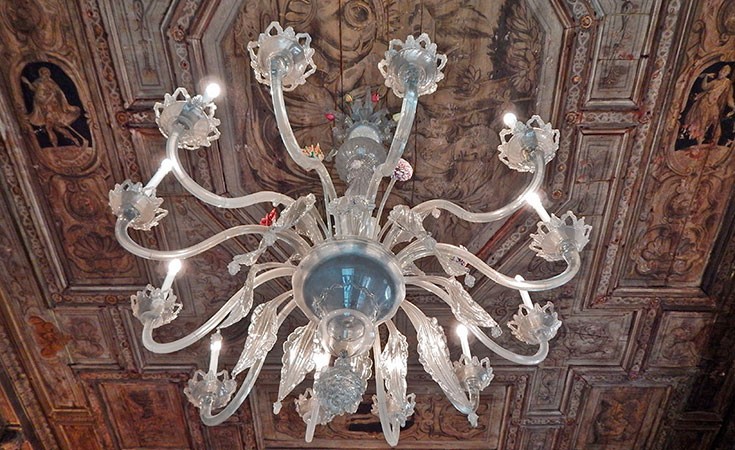
This museum is dedicated to famous Murano glass, made exclusively on the Murano Island but due to the extremely developed Venetian trade fleets reached numerous countries on different continents and established itself for its quality. Here you will have the chance to get to know the 700 years long history of glassmaking on the Murano Island.
The exhibited collection is in chronological order. The exhibition starts with archeological findings from the Roman period- 1st to 4th century AD. Continuing on the trail starts the overview of the Murano glass that covers 700 hundred years of glassmaking on the island (from 1300 to today).
In the collection from the Roman period visitors will have a chance to see objects of glass made in Syria, Palestine, Greece, East-Mediterranean area and Dalmatia. Here you will see ancient perfume vials cinerary urns and other funeral objects made by glassblowing technique which served as the inspiration for Murano glassmakers.
Venetian glassmaking started under the influence of Syrian glassmakers whose art was very appreciated in the Middle Ages. In the beginning, Venetian glassmakers only imitated Syrian masters and even imported raw materials from Syria.
Only in the 15th century, Venice took supremacy in glassmaking having played an important role in the decline of the Syrian glassmaking industry.
Murano Island is definitely famous for the invention of clear glass, invented by Angelo Barovier from Murano. For the first time the glass became transparent and crystal-like.
In the 16th century onwards, glassmaking became an art in which artists competed to make more extravagant objects. The Free hand technique (handling glass by hand) and engraving glass with diamond pointed tools (a technique already used in the Roman period) became popular. In the 17th century, iced glass as well as filigree technique were invented.
With the fall of the Venetian Republic, glassmaking suffered a great blow. At first the laws favoring the local production were abolished, resulting in the spread of glassmaking in other areas. Later, during the Austrian rule, the market was overwhelmed by Bohemian crystals, while the import taxes on raw materials rose for Venetian glassmakers. Murano glassmaking suffered but survived, finding its way into the Italian design industry and evolving with the current trends.
Interesting facts